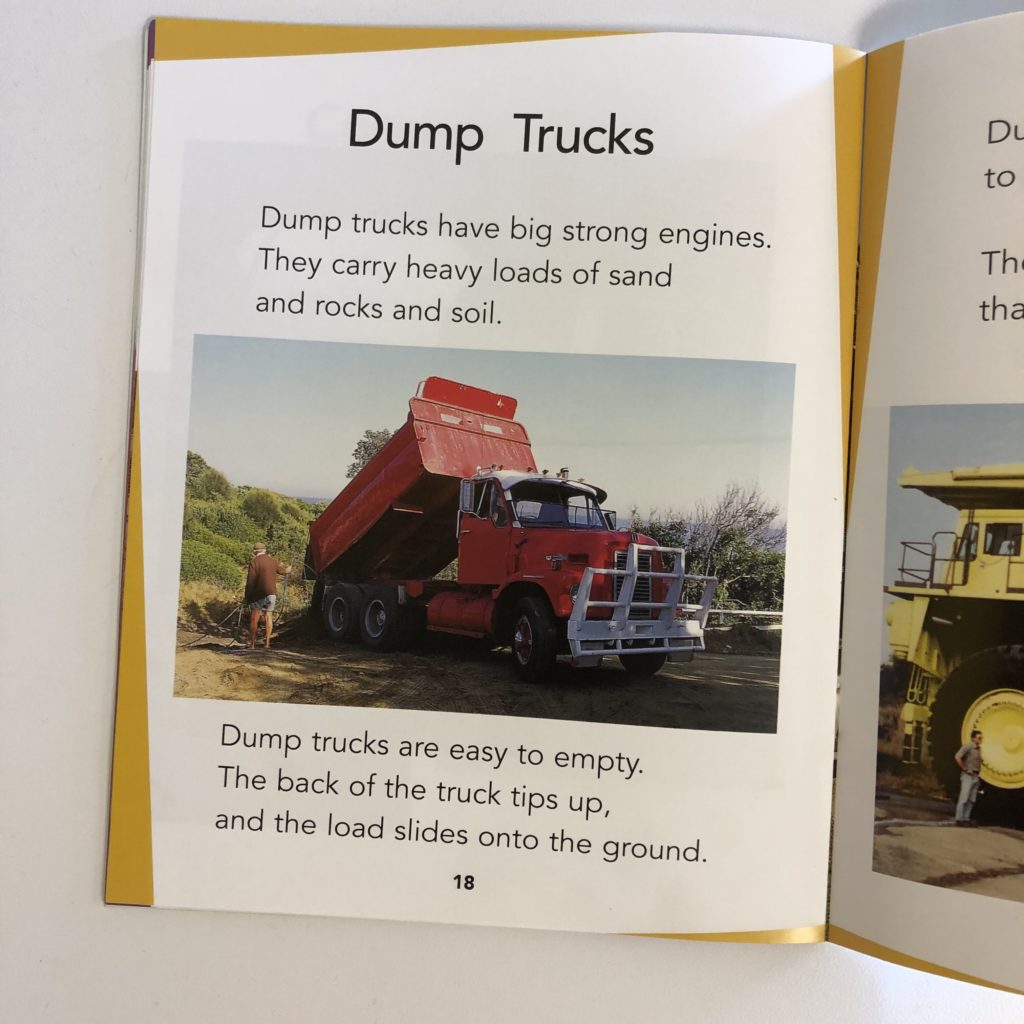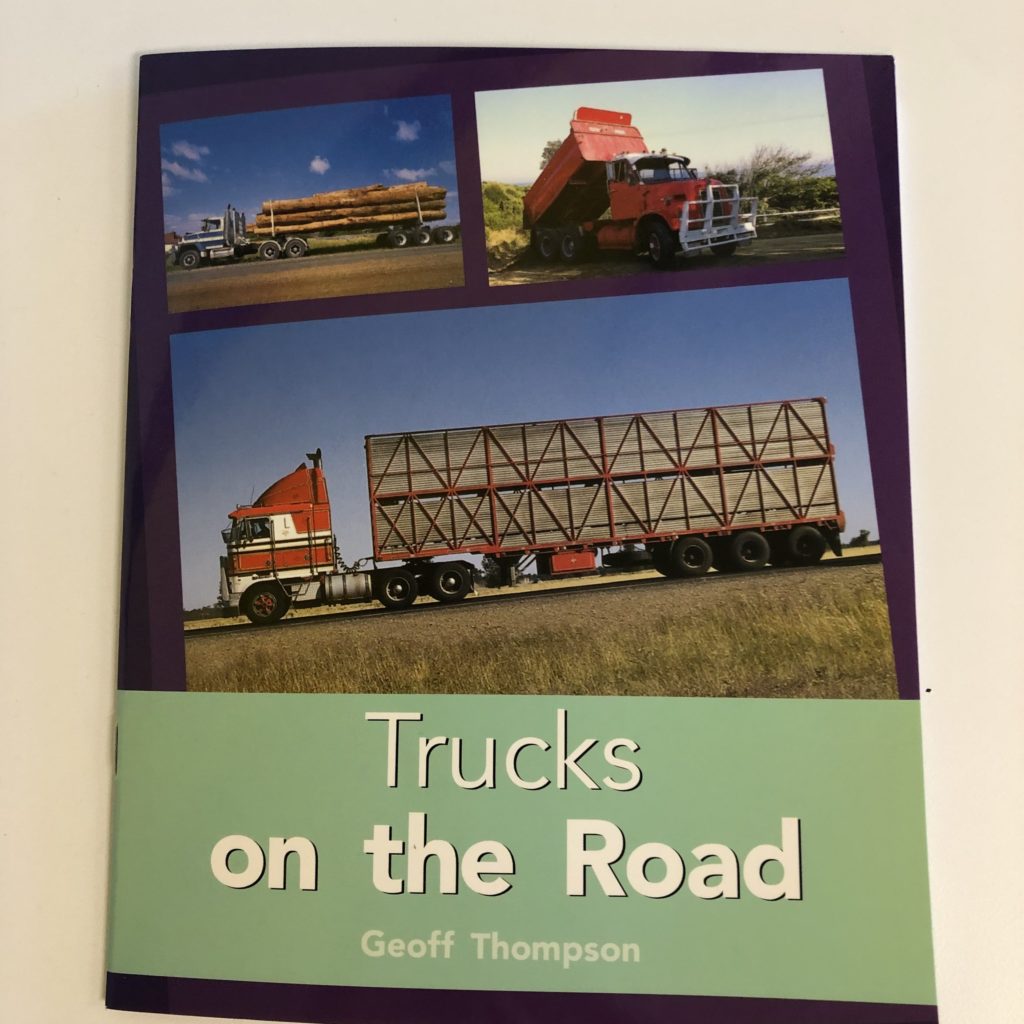
If I’ve leaned in to listen to a transitional stage reader and they do not have any word solving issues (and their fluency is adequate), I start with one of these two questions to check comprehension:
- What did you just learn in this part? (for non-narrative)
- What just happened in this part? (for narrative)
These questions help me begin to assess for understanding of information explicitly stated in the text. If you have a student who responds with “I already knew it all!” then try “What did the author try to teach the reader on this page?” or “What does the author describe on this page?” 😉
If I notice that the student’s understanding of within the text meaning has gone awry in some way, then this is where I coach. Frequently, NOTICING WHAT THE STUDENT DOESN’T SAY can help you identify a point of need.
Sample Conference: What did you just learn?
A student read aloud easily a page about dump trucks (see image below).

After he read, I said, “Tell me a little bit about what the author wants readers to know about dump trucks on this page.”
“They have big engines and carry loads of rock and dirt,” he responded.
While he recalled two facts from the page (woohoo!), I noticed he didn’t include any details from the the last part of the page. I wondered why so I asked, “Can you tell me more?”
He shook his head. I asked him to reread the last two sentences and talk to me about what he’d learned. He clearly didn’t understand the last sentence which is tricky in that it explains how the dump truck empties. The phrase “tips up” may not be as familiar as “tips over.”

Sample Think Aloud
When I notice something is awry or missing, then I think aloud about how I make sense of the text. In other words, instead of asking this student a bunch of questions, leading him to understanding, I thought aloud:
Watch as I try to make sense of this sentence. [Paused to read aloud.] That’s a long sentence. I think I’m going to just think about the first part for now. “The back of the truck” – oh, that’s a part of the truck and looking at the photograph, I can see the back of the truck. “Tips up” – I’m looking at the photograph and it looks like this part [I point] is tipping up. Do you think that’s right? Let’s look at the next part of the sentence and think together.
We thought through “the load slides down onto the ground” and how that is the “effect” of the back tipping up. We also thought back to the previous sentence “dump trucks are easy to empty” — pointing to the photograph and making sense of what the author was trying to do which is explain how the trucks are easy to empty.
When we finished, I closed by saying, “When you get stuck on a tricky part, sometimes it helps to do what we just did as readers — reread, think about parts of the sentence, and use the photographs to help us.”
If a student appears to have “within” text understanding, then my next move is to ask a higher level thinking question.
Check out this blog entry if you’re look for more information on “observing for what students are not saying during conferences.”
Hope this helps.
S
UPDATED 2/19/2021
